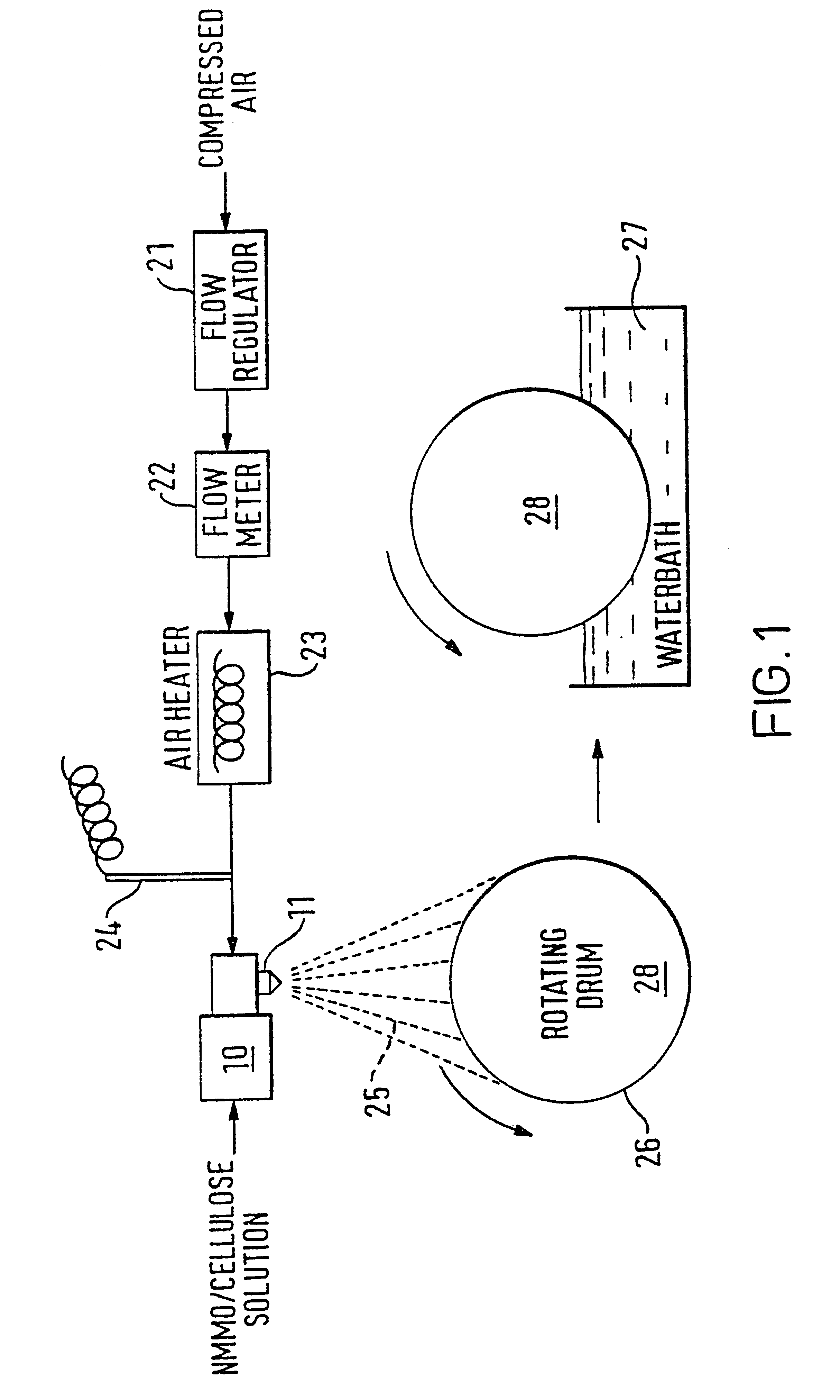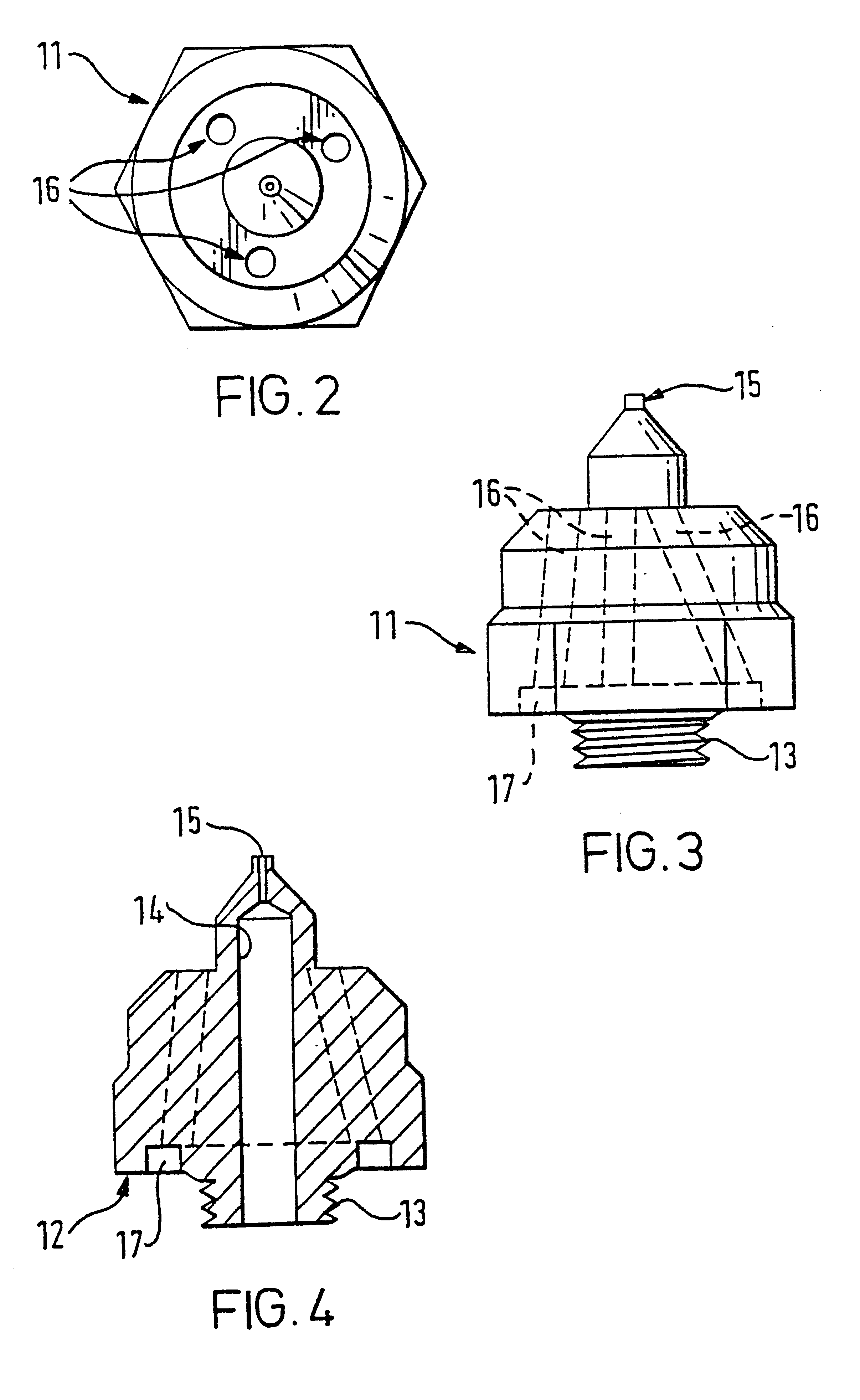Method of manufacture of nonwoven fabric
a non-woven fabric and manufacturing method technology, applied in the direction of manufacturing tools, melt spinning methods, applications, etc., can solve the problems of high energy consumption and high cos
- Summary
- Abstract
- Description
- Claims
- Application Information
AI Technical Summary
Problems solved by technology
Method used
Image
Examples
Embodiment Construction
With reference to FIG. 1, there is shown an extruder 10 having a nozzle 11 attached thereto. The extruder is fed with a solution comprising 15% by weight cellulose, 10% by weight of water and 75% by weight of N-methylmorphylene-N-oxide (NNMO). The cellulose has an average degree of polymerisation of about 600.
The cellulose solution may be manufactured as is described in WO 94 / 28217. The cellulose solution in the extruder is held at a temperature of between 95 and 110.degree. C., preferably 105.degree. C., and is forced through the nozzle to extrude as a continuous filament of cellulose dope.
The nozzle 11 is shown in FIGS. 2 and 3 and may be secured directly onto the extruder 10, or may be secured to an adapter (not shown) which in turn is secured to the extruder 10. The nozzle 11 has a hollow screw threaded stud 13 on its back face 12 and a central passageway 14 which terminates in a jet aperture 15. The jet has a diameter of between 0.2 and 0.3 mm, and preferably about 0.27 mm.
The ...
PUM
| Property | Measurement | Unit |
|---|---|---|
| Angle | aaaaa | aaaaa |
| Angle | aaaaa | aaaaa |
| Angle | aaaaa | aaaaa |
Abstract
Description
Claims
Application Information
 Login to View More
Login to View More - R&D
- Intellectual Property
- Life Sciences
- Materials
- Tech Scout
- Unparalleled Data Quality
- Higher Quality Content
- 60% Fewer Hallucinations
Browse by: Latest US Patents, China's latest patents, Technical Efficacy Thesaurus, Application Domain, Technology Topic, Popular Technical Reports.
© 2025 PatSnap. All rights reserved.Legal|Privacy policy|Modern Slavery Act Transparency Statement|Sitemap|About US| Contact US: help@patsnap.com



